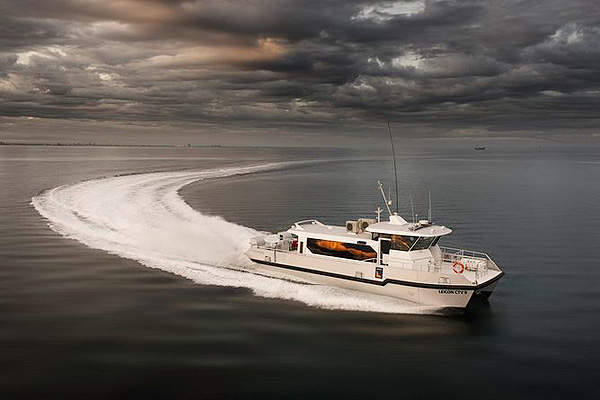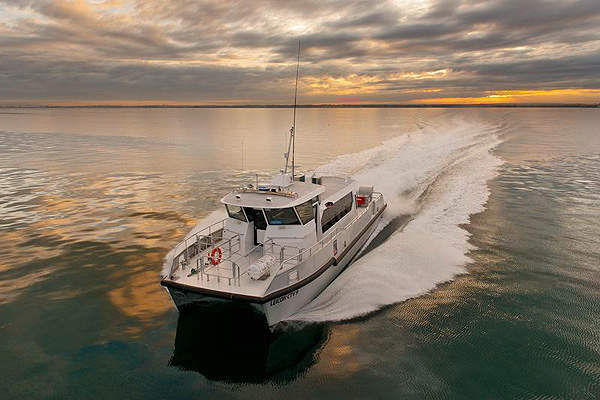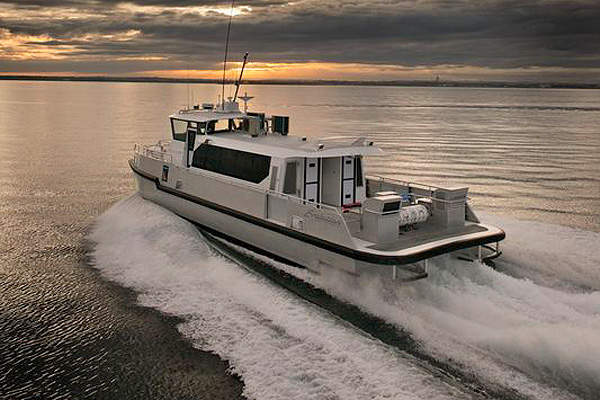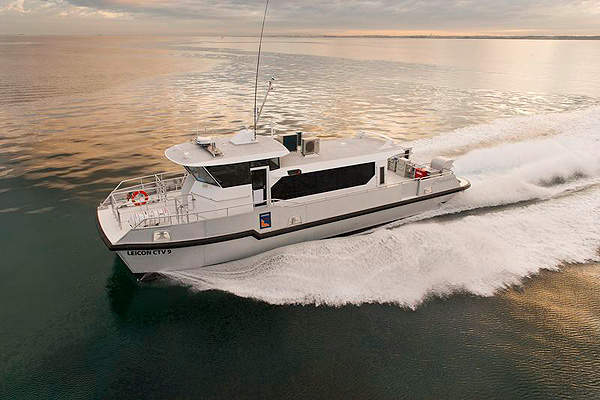![]()
Leicon CTV9 is the first of two new crew transfer catamarans built by Evolution Commercial. The vessel was designed by One2Three Naval architects. The second catamaran vessel is the Leicon CTV10.
Leicon CTV9 was launched in April 2012 and was delivered in May 2013. The new crew transfer vessel will serve the oil and gas industry at Barrow Island in north-western Australia, along with its sister vessel Leicon CTV10.
The catamaran is designed to transport workers from the mainland to offshore worksites and vice versa.
The shape of the vessel’s hull and its structure were specially designed to handle harsh sea conditions found on the west coast of Australia.
The new catamaran will serve the Greater Gorgon offshore gas fields, located about 60km from the Barrow island. The fields currently include Gorgon, Chrysaor, Dionysus, West Tryal Rocks and Spar. First gas from Greater Gorgon is scheduled for 2014.
Barrow Island is the second largest island in Australia. It is located about 50km north-west off the Pilbara coast of Western Australia. Oil was first discovered from the island in 1964 by WAPET (a consortium of Australian Motorists Petrol Company (Ampol)), and Caltex.
Leicon CTV9 dimensions and construction
The crew transfer catamaran has an overall length of 20.1m, a waterline length of 17.7m, beam of 6.0m, depth of 2.1m and draught of 0.94m. It can carry 36 passengers and three crew members.
The construction of the vessel broke certain records, with its designer and constructor respectively readying the vessel for cutting in ten days and for launch within 13 weeks.
The construction of the catamaran came within 40kg of the designed weight, and the vessel achieved 0.1 of a knot more than the designed speed.
The catamaran, during its sea trails, provided a smooth ride for 32 people and two crew members, achieving 26kt at 65% MCR fully loaded.
Tank capacities of the crew transfer catamaran
The crew transfer vessel is fitted with storage tanks that are capable of storing 4,000l of fuel, 1,000l of fresh water and 1,000l of sullage.
Leicon CTV9 propulsion and diesel engines
The vessel is powered by Caterpillar C18 ACERT main diesel engines, rated at 651kW at 2,200 revolutions per minute (RPM).
The Caterpillar C18 ACERT engine, two of which Leicon CTV9 employs, has a displacement of about 18.1l with a bore of 145mm and a stroke of 183mm. The engine weighs 1,673kg, has a height of 1,143.9mm and width of 1,077.2mm.
The oil change interval for the engine is about 500 hours. The engine comprises of a standard SAE No. 1 flywheel and flywheel housing, comprising of 113 teeth and an optional SAE No. 0 flywheel, plus a flywheel housing 136 teeth.
The engine features equipment, such as an air inlet system, control system, cooling system, an exhaust system, fuel pumps and filter and lube system.
The vessel’s engines are driven by Rolls Royce’s Ka Me Wa 36A3 water jets. Each of the Kamewa water jets features a stainless steel pump unit. The vessel further features two ZF500 gearboxes.
Ka Me Wa Joystick control system has been positioned at the main helm and aft docking station, which provides an accurate docking and good visibility from both stations. The catamaran is capable of sailing at a speed of 32.1kt at full load.
Related content
AMG Incentive, Offshore Service Vessel, Australia
AMG Incentive is an offshore service vessel (OSV) / crew transfer vessel owned by Argonaut Marine Group (AMG).
Toisa’s Multipurpose Offshore Construction Vessel (MOCV), South Korea
Toisa, a marine services provider, contracted Hyundai Heavy Industries (HHI) in February 2013, to construct a multipurpose offshore construction vessel (MOCV) based on the X-Bow hull design.







